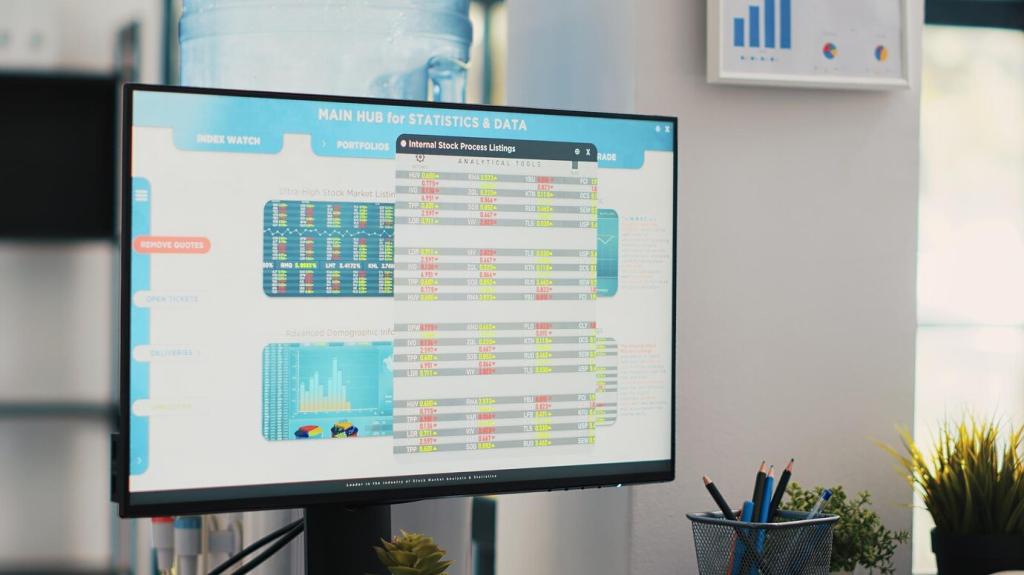
Security Considerations for Cloud-Based Accounting
This edition explores Security Considerations for Cloud-Based Accounting—how to safeguard sensitive financial data without slowing down your business. From identity controls to incident readiness, we’ll turn complex risks into clear, practical steps. Subscribe and share your experience so our community can learn together.

Common Attack Vectors You Must Expect
Phishing, credential stuffing, API abuse, and business email compromise remain the top entry points for attackers. Finance teams are lucrative targets, and a single exposed password can unlock invoices, payroll, and banking details overnight.

The Shared Responsibility Reality
Cloud providers secure the infrastructure, while you secure identities, configurations, and data flows. Clarify where your responsibility begins, document your controls, and verify them regularly rather than assume the platform handles everything.

A Cautionary Tale from a Fast-Growing Startup
A startup linked its accounting tool to a file-sharing app using broad API scopes. An ex-employee’s token leaked, exposing export files. Least-privilege tokens and swift offboarding would have prevented the silent, weeks-long data drip.
Identity and Access Management for Finance Teams
Adopt phishing-resistant MFA and single sign-on to centralize control. Accounting staff switch tools frequently; SSO reduces password reuse, improves session hygiene, and lets you revoke access from one place within seconds.


Require TLS 1.2+ in transit and provider-managed or customer-managed keys at rest. Monitor key rotation and access logs, and ensure no export leaves the platform unencrypted, especially scheduled CSV or PDF reports.

Adopt versioned, immutable backups and test restores quarterly. Define clear RPO and RTO targets with finance leadership so expectations are realistic when a misconfiguration or ransomware attempt challenges your continuity plans.

Confirm where ledgers, invoices, and attachments reside. Align with GDPR, HIPAA where relevant, and industry expectations. Ask vendors for region pinning and document lawful bases for cross-border transfers before audits arrive.
Certifications, Reports, and Penetration Tests
Request SOC 2 Type II, ISO 27001, and recent penetration test summaries. Read SOC bridges and exceptions carefully; control gaps in change management or incident response can become your problem during peak reporting cycles.
SLAs, Incident Response, and Support Escalation
Negotiate incident communication timelines, log retention, and forensics support. Confirm 24/7 escalation paths and how quickly you’ll receive indicators of compromise so your team can act within hours, not days.
Secure Configuration and Continuous Monitoring
Disable public links, mandate MFA, restrict IP ranges for sensitive operations, and log every export event. Capture configuration baselines so any deviation triggers a ticket with clear ownership and remediation timelines.
Fraud Prevention and Segregation of Duties
Clear Separation of Critical Steps
No single person should create vendors, approve invoices, and release payments. Use enforced workflows and approval chains to separate duties and leave an immutable trail that investigators and auditors can trust.
Automated Controls and Intelligent Alerts
Set velocity limits, vendor change alerts, and anomaly detection for unusual routing numbers or sudden threshold jumps. Couple automated controls with human review during month-end to catch edge cases algorithms might miss.
A Real-World Save: The Duplicate Payment Story
A controller noticed an alert for two identical payments minutes apart. Because approvals were separated and logs were clear, the bank recall succeeded. Share your own save stories in the comments to help others.
Incident Readiness and Business Continuity
Draft step-by-step playbooks for credential theft, data export anomalies, and ransomware spillover from integrated apps. Run tabletop drills with finance and IT so everyone knows roles before stress hits.

